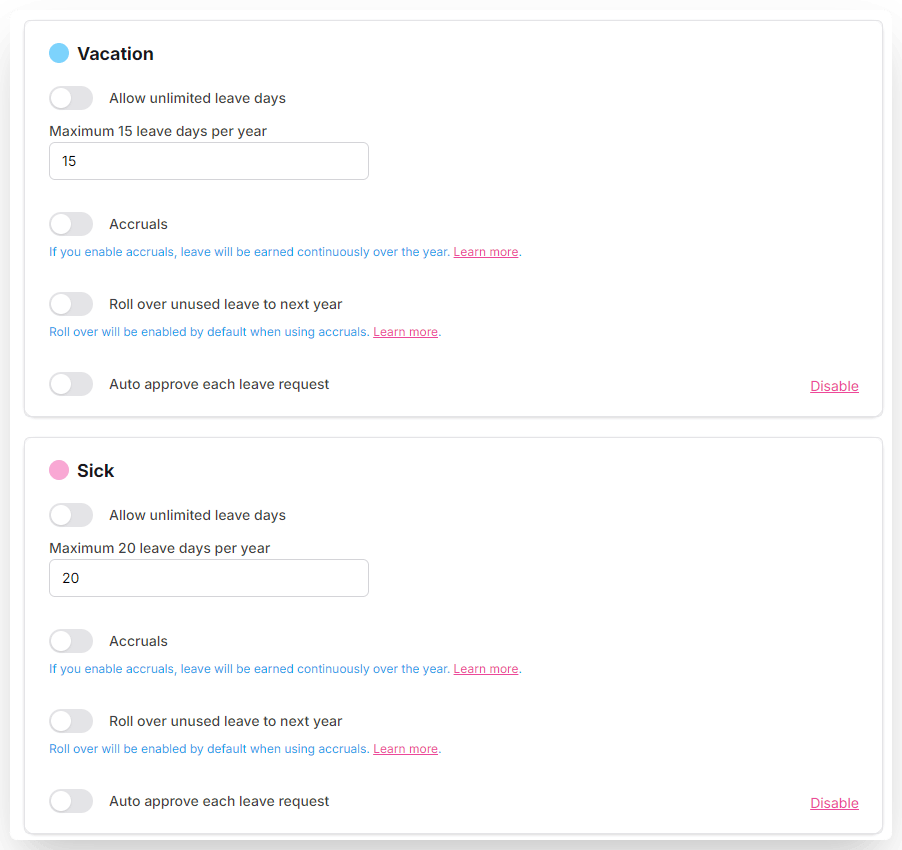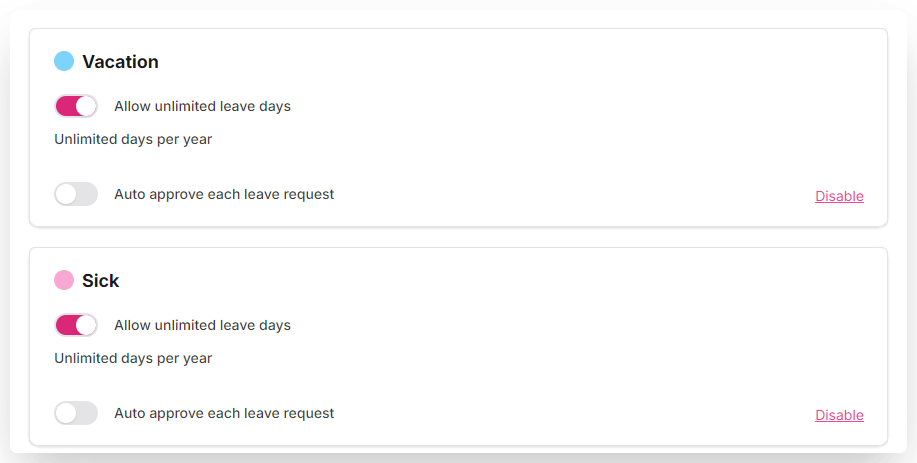November 18, 2024
Presenteeism: The $150 Billion Problem for Modern Businesses
What if your organization is losing more productive hours from employees showing up than from those staying h...
We’re in an age where new workplace terms are being thrown at us from all angles. One you might have heard is Discretionary Time Off, aka Discretionary PTO or DTO.
Is this a term you need to know about? What does it mean? Why has the world’s biggest company adopted this policy for their US employees?
These are all questions we’ll answer in this article. Keep reading for more.
Discretionary time off is a policy by which employees are allowed to take as much time off as they like, with no set limit on vacation time or other forms of paid time off, like most leave policies apply.
Employees can take time off essentially “at their discretion”, which is where the name comes from.
Traditional PTO policies put a limit on vacation days and other leave types.
For example, employees might get 15 vacation days and 20 sick days to use over the course of the year.

There are no limits with discretionary time off. Employees can take 10 days off, 21 days off, 26 days off, and they receive their normal salary either way.

One key point to note is that there is no “unused” PTO with a discretionary time off policy, since there is no quota applied. This will be relevant if your state laws or company policy say that any unused PTO will be paid out to employees at the end of the year or when they leave their job.
There are guidelines and nuances to a discretionary PTO policy; it doesn’t allow complete freedom for employees. But many believe it offers more freedom and flexibility than a traditional PTO policy.
Unlimited PTO and discretionary PTO are interchangeable names for the same thing.
There’s really no difference in terms of their execution. The one difference, and the reason that you would want to call it discretionary time off instead of unlimited time off is that the second implies that it is literally “unlimited”.
Although the policy doesn’t have any strict limits, with both discretionary and unlimited PTO, reasonable use is assumed.
Most businesses won’t allow employees to take 100+ days off per year, coming in and out of the office as they feel like it.
Yet if you tell your employees they have “unlimited time off”, this is what they might think. Discretionary time off is more vague, which may be better than being misleading.
Learn More: the most interesting stats and data about Unlimited PTO
A lot of companies around the world, big and small, have jumped on the flexible time off bandwagon in recent years.
Most notably, it was revealed in early 2023 that Microsoft had switched to an unlimited PTO policy, referred to internally as “Discretionary Time Off”, for all its salaried US employees.
These companies are other notable examples of unlimited time off in action.
Why do they do it? And if it’s so great, why doesn’t every company have unlimited time off? Here are the pros and cons.
Here’s the bottom line; discretionary time off or unlimited time off can work in many different types of businesses; large companies, small startups, and SMBs. But it needs to be managed correctly.
If you’re thinking about making the switch, here are some ideas for managing discretionary time off effectively.
First, understand that not all businesses and roles are suitable for discretionary time off.
Businesses generally only apply unlimited PTO for salaried employees. It’s a lot harder to work out and keep it fair if employees are paid hourly.
A DTO policy might not be a good fit for businesses that rely on a certain amount of staff coverage at all times (e.g. service businesses), as an increase in time off usage may hurt your ability to serve customers.
Discretionary time off also requires effective management and a strong company culture. If this is not you, stick with a policy with more structure.
Discretionary PTO is a fairly new idea, so it can introduce gray areas in terms of compliance.
Some states (or countries) may have laws that require you to give a specific number of days/hours of PTO, and pay out/roll over any unused days. Offering an unlimited amount of time off may comply with these laws, or may not.
If you’re unsure, consult with a legal professional to make sure you won’t accidentally be in breach of any laws.
Further Reading: Leave Laws in the US and around the world
DTO only works when employees have clear guidelines on how the policy is supposed to work.
These guidelines should state points like:
If you’re switching from a traditional PTO policy to discretionary time off, you may have employees with accrued PTO balances.
You need to reset these balances, but you can’t just tell your employees that all their accrued time off is now gone. You’ll need to figure out a plan to handle this.
You could give your employees ample notice of the switch to DTO and encourage them to use up their balances before the switch (though this might not work if employees have a lot of PTO stored away).
A better idea would be to pay out any unused PTO to clean the slate, and avoid upsetting anyone.
Discretionary or unlimited PTO still necessitates that you track when people take time off.
For one thing, you need to know who has time off coming up so you can plan ahead and keep operations running.
You also want to be able to track whether employees are taking too much, or too little, time off.
Make sure you’ve got an easy and a reliable way to track time off – like Flamingo – even if you no longer have any PTO limits.
Discretionary time off or unlimited time off is not for everyone. And there’s nothing wrong with that.
If you choose to make the switch, review it after a while to see whether it’s working as you expected.
You might want to check how much time off employees are taking on average, or look at other productivity metrics that may correlate with the change in policy.
Also, talk to your employees. Ask, honestly, how they are feeling about it. You want everyone to be happy with the policy.
Discretionary time off can be a huge boost for employee engagement, wellbeing and job satisfaction.
It can also be crippling in all these areas, by removing clear expectations and putting pressure on employees to be at work as much as possible.
A few companies do this consciously, but in many more, it’s subconscious. Employees feel an unspoken pressure to show up to work and to not abuse their “unlimited” vacation allowance.
There are certainly enough accounts of businesses that do it well to say that discretionary time off or unlimited PTO policies can work.
But there are many more who say they found that workers weren’t taking enough time off, and people who label it as a scam or a trap.
You could try it out in your business, or if you want a more structured way to approach paid time off, you could implement a mandatory vacation policy, or simply provide a generous amount of PTO.
It’s up to each employer to figure out what is the best fit for their own team.
Flamingo® makes managing your team’s paid time off a breeze.